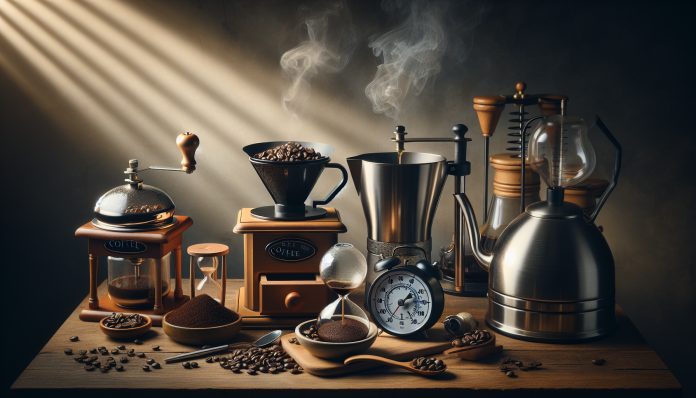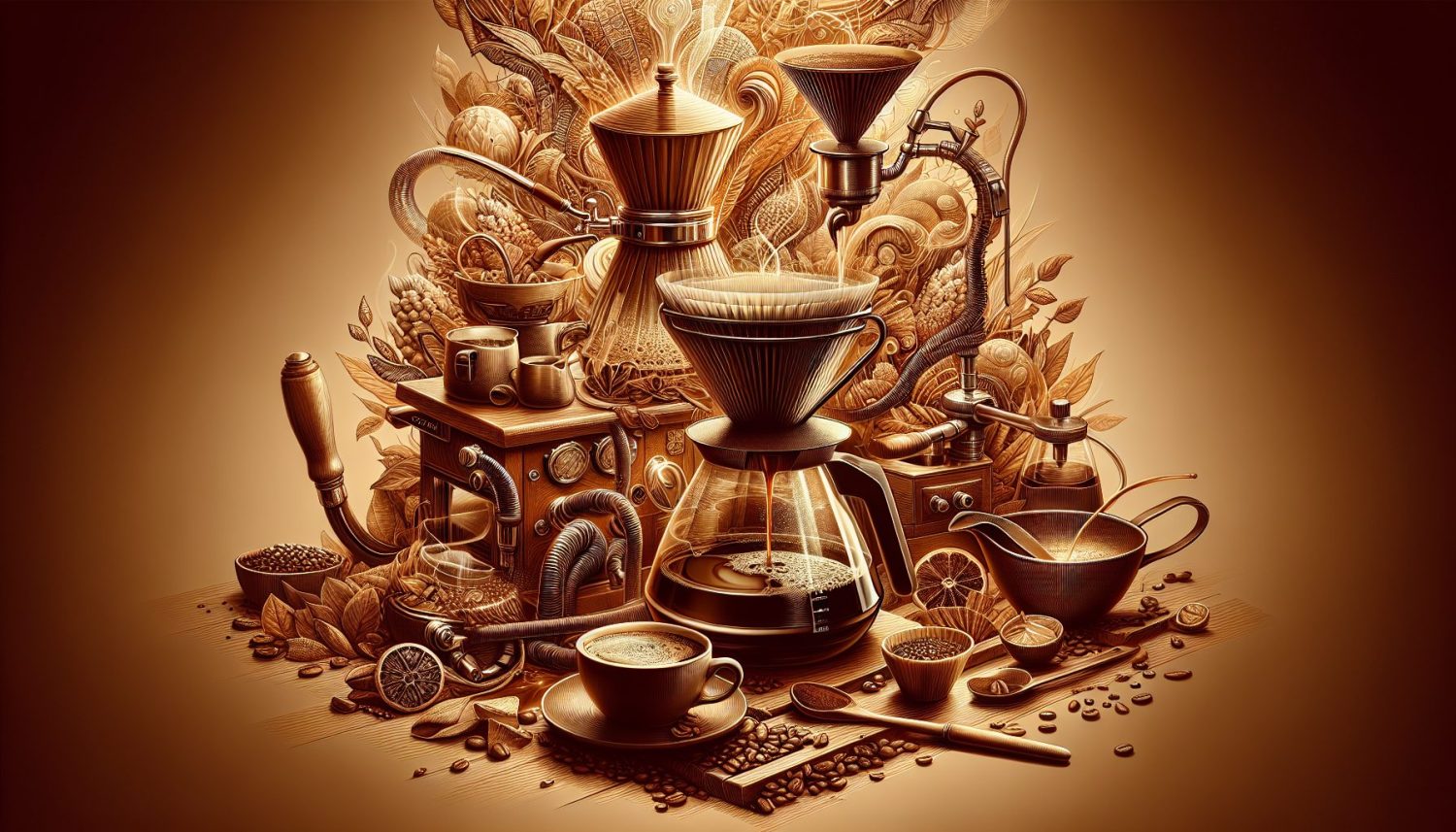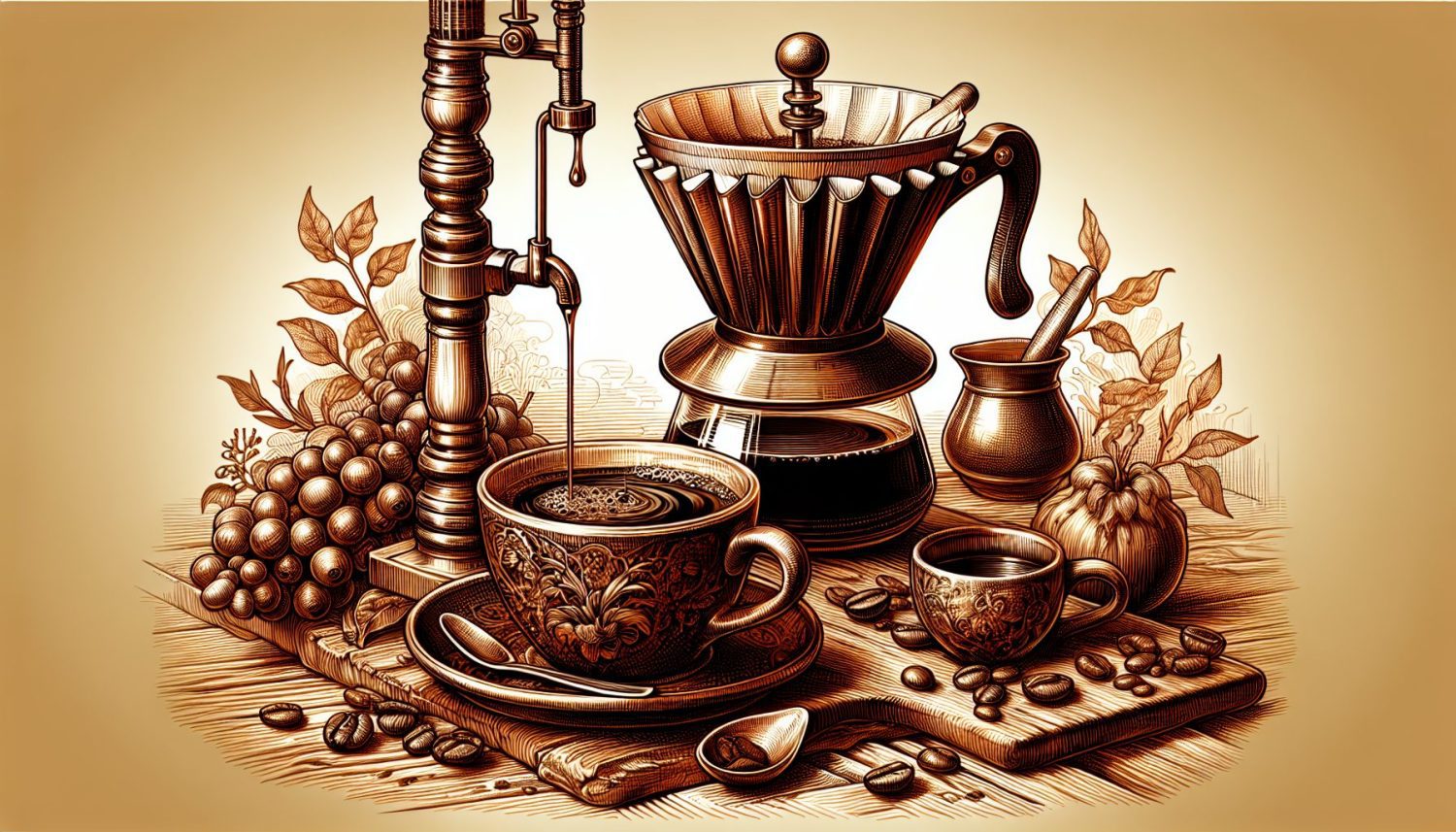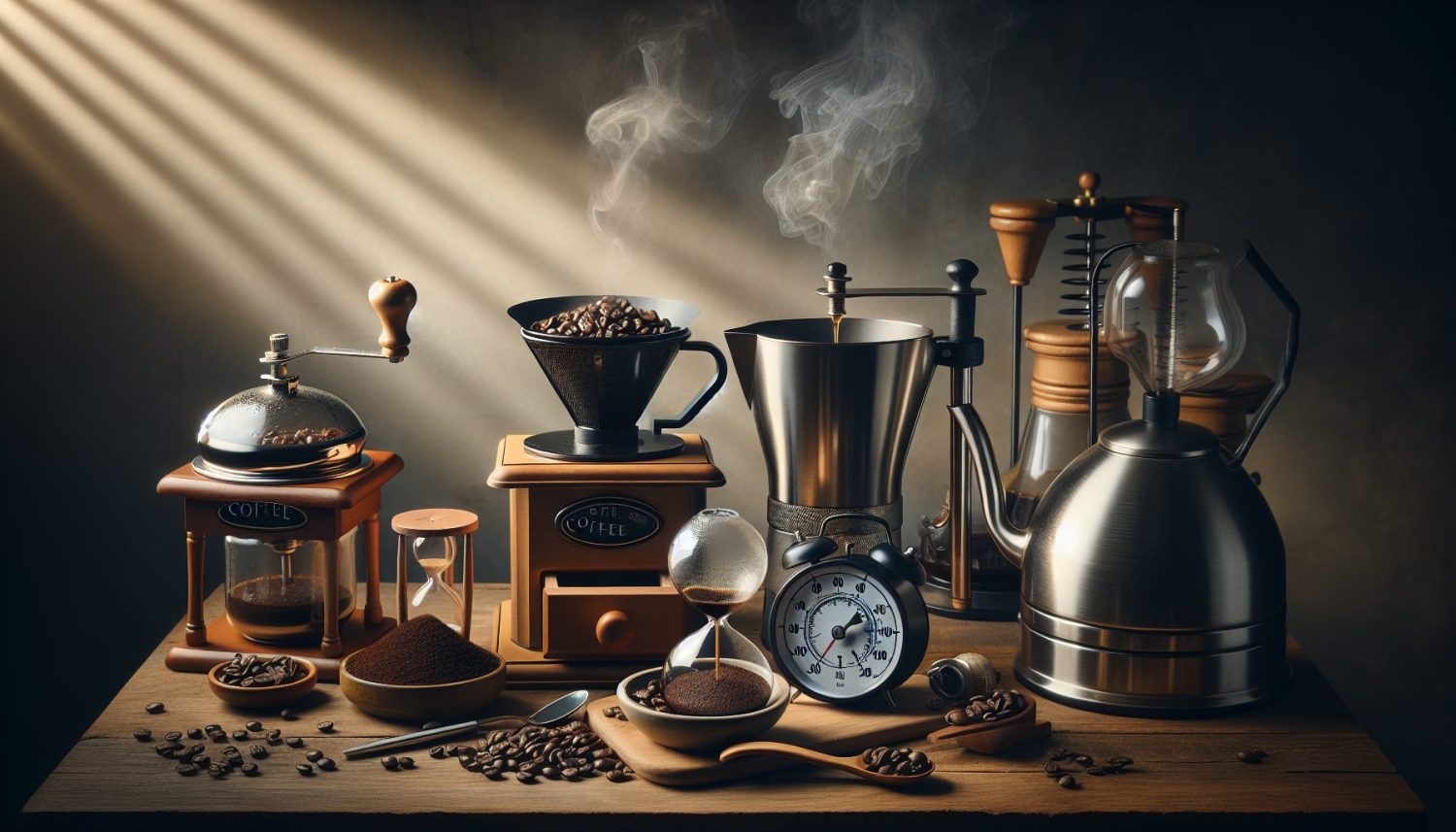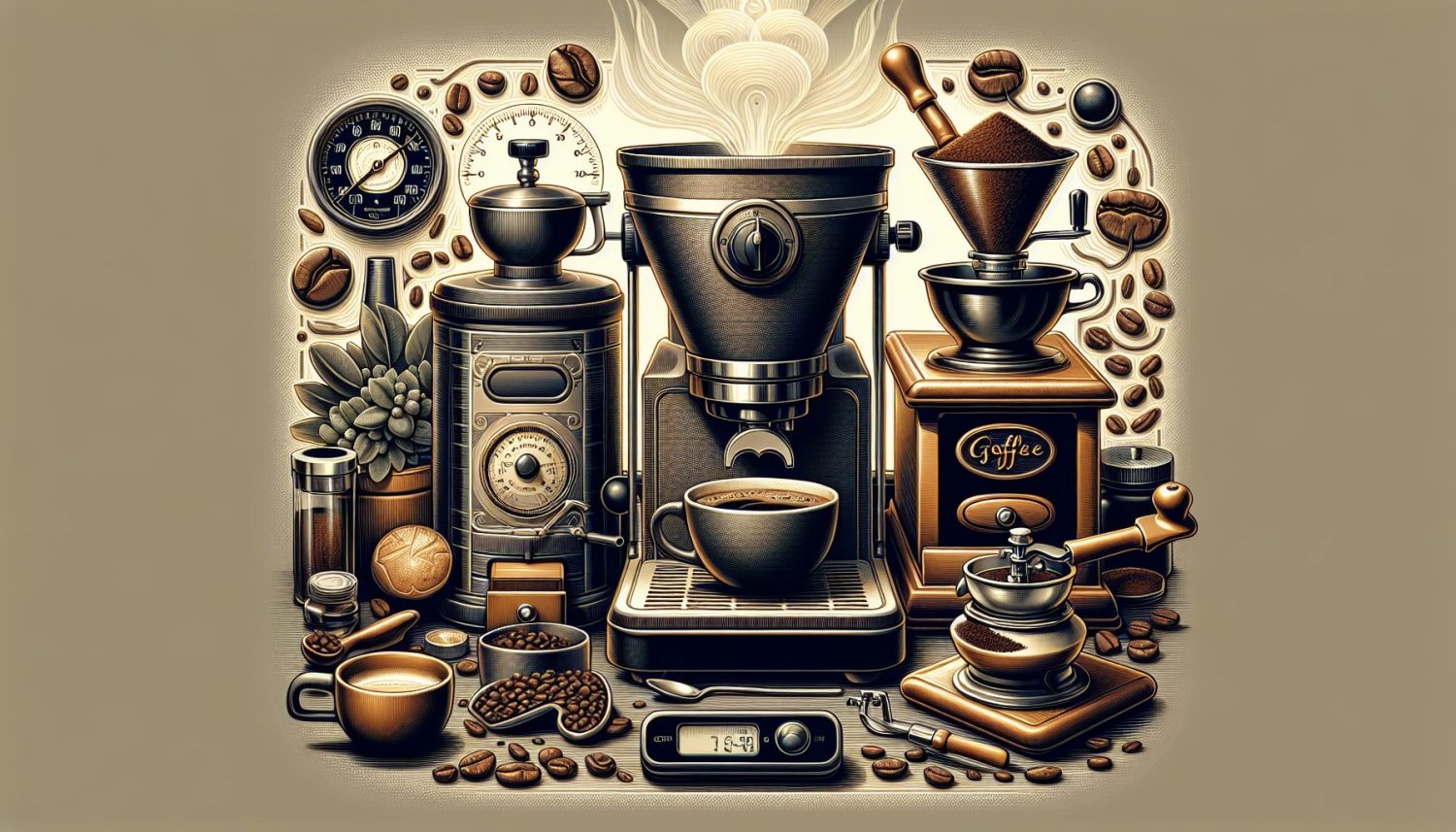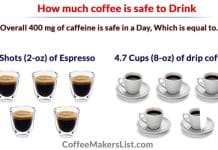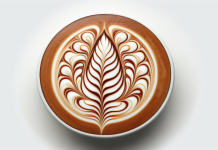If you’re a coffee lover like us, then you know that there’s nothing quite like that perfect cup of cafe-quality coffee. But achieving that same impeccable taste at home can sometimes feel like a challenge. That’s where drip brewing comes in. In this article, we’ll share with you some valuable tips that will help you achieve that sought-after coffee shop flavor right in the comfort of your own kitchen. So grab your favorite mug and get ready to brew up a delicious batch of caffeine bliss!
Choosing the Right Coffee
Opt for high-quality beans
When it comes to brewing the perfect cup of coffee, starting with high-quality beans is essential. Look for coffee beans that are freshly roasted and sourced from reputable suppliers. Quality beans ensure a fuller and more nuanced flavor in your cup of coffee. Experiment with different varieties, such as Arabica or Robusta, to find the flavor profile that suits your preference.
Consider the roast level
The roast level of coffee beans greatly affects the taste and aroma of the final brew. Lighter roasts tend to have a brighter, more acidic flavor, while darker roasts have a richer, bolder taste. It is important to note that the longer the beans are roasted, the more oils are released, which can result in a stronger and sometimes bitter taste. Experiment with different roast levels to discover your preferred flavor profile.
Be mindful of the grind
The grind size of your coffee beans plays a crucial role in the extraction process. Finer grounds are suited for espresso machines, while coarser grounds work well for drip brewing. It’s important to choose the right grind size to ensure optimal extraction and avoid over-extraction or under-extraction. Invest in a good-quality grinder to achieve a consistent grind size, as this will greatly impact the taste and consistency of your brew.
Water Matters
Start with fresh, cold water
Water quality is often overlooked but plays a significant role in the overall taste of your coffee. Start with fresh, cold water, as stale or impure water can taint the flavor. Avoid using pre-boiled or reboiled water, as it lacks oxygen and can result in a flat-tasting brew. Using filtered or bottled water is also a good option to ensure the purest taste in your coffee.
Ensure proper water temperature
The water temperature used for brewing coffee is important to achieve optimal extraction. The ideal temperature range for brewing coffee is between 195°F and 205°F (90°C to 96°C). Water that is too hot can cause over-extraction, resulting in a bitter taste, while water that is too cold may not extract the flavors fully. Invest in a coffee maker with adjustable temperature settings or use a thermometer to maintain the perfect water temperature.
Mastering the Ratio
Understanding the coffee-to-water ratio
The coffee-to-water ratio is crucial in achieving a well-balanced and flavorful cup of coffee. The general guideline is to use approximately 1 to 2 tablespoons of coffee for every 6 ounces of water. However, this can be adjusted based on personal preference. If you prefer a stronger cup, increase the amount of coffee, and if a milder taste is desired, reduce the amount. Experiment with different ratios until you find the perfect balance for your taste buds.
Experimenting with ratios for personal taste
Coffee brewing is an art, and part of that art is the ability to experiment with ratios to create a cup of coffee tailored to your preferences. Start by adjusting the coffee-to-water ratio slightly to see how it affects the flavor. Gradually increase or decrease the amount of coffee used to achieve the desired strength and taste. Remember to take notes during your experiments to keep track of what works best for you.
Investing in Equipment
Choose a reliable drip coffee maker
Investing in a reliable drip coffee maker is the foundation of a great brewing experience. Look for a coffee maker that allows for precise control over water temperature and brewing time. Consider features such as programmability, brew strength control, and the capacity to brew multiple cups. Research different brands and models to find one that suits your needs and budget.
Consider additional equipment
While a drip coffee maker is a great starting point, there are additional pieces of equipment that can enhance your brewing process. A burr grinder is highly recommended to ensure a consistent grind size. A gooseneck kettle allows for precise pouring when practicing pour-over brewing methods. A coffee scale can be useful for measuring the coffee-to-water ratio accurately. Consider these additional tools to take your coffee brewing to the next level.
Experiment with pour-over setups
If you’re looking to delve deeper into the world of coffee brewing, consider exploring pour-over setups. Pour-over brewing allows for more control over variables such as water flow rate and extraction time. Invest in a good-quality pour-over dripper, such as a V60 or Chemex, and practice the pouring technique to achieve a smooth and flavorful cup of coffee. Pour-over brewing can be a rewarding and enjoyable brewing method for coffee enthusiasts.
Grind Size and Consistency
Determining the ideal grind size
The grind size of coffee beans greatly influences the extraction process. For drip brewing, a medium grind size is generally recommended. This allows for a balanced extraction, capturing the flavors and oils without overpowering or under-extracting. Adjust the grind size slightly to experiment and find the perfect balance for your taste buds. Remember that different brewing methods may require different grind sizes, so it’s important to consider the equipment you are using.
Exploring the impact of grind consistency
Consistency in grind size plays a significant role in achieving a consistent and flavorful cup of coffee. Inconsistent grind sizes can lead to uneven extraction, resulting in a brew that is both weak and bitter in certain areas. Invest in a burr grinder, as they provide a more uniform grind compared to blade grinders. Additionally, regularly clean and maintain your grinder to ensure the best possible grind consistency.
Blooming Technique
Understanding the importance of blooming
Blooming is a crucial step in the coffee brewing process, particularly when using freshly roasted coffee beans. It involves pouring a small amount of hot water over the coffee grounds and allowing them to “bloom” or release gases. This process helps to degas the beans and allows for a more even extraction during brewing. Blooming enhances the aroma and flavors of the coffee, resulting in a more complex and enjoyable cup.
Steps to achieve a proper bloom
To achieve a proper bloom, start by adding a small amount of hot water to wet the coffee grounds evenly. Let it sit for around 30 to 45 seconds, allowing the gases to escape. Then, continue the brewing process by pouring the remaining water slowly and evenly over the grounds. The blooming stage sets the foundation for a flavorful and aromatic cup of coffee.
Water Quality and Filtration
Considering the impact of water quality
Water quality significantly affects the taste and clarity of your final brew. Tap water varies in mineral content, which can alter the flavor of your coffee. Consider using filtered water or bottled water for a purer taste. If your tap water has a high mineral content, it may be worth investing in a water softener or filtration system to ensure consistent and high-quality water for brewing.
Utilizing water filtration options
There are various water filtration options available to enhance the quality of your brewing water. Charcoal or activated carbon filters can help remove impurities, chlorine, and unwanted flavors. Some coffee makers also come with built-in water filters that can be replaced regularly. Experiment with different filtration methods and find the option that best suits your water quality and brewing preferences.
Brewing Time and Extraction
Mastering the brewing time
The brewing time is a crucial factor that determines the strength and flavor of your coffee. For drip brewing, the optimal brewing time is typically between 4 to 6 minutes. This allows for a balanced extraction, capturing the flavors and aroma without over-extracting. Be mindful of the brewing time and adjust it as needed to achieve the desired taste. Remember that different coffee beans and grind sizes may require slight variations in brewing time.
Understanding coffee extraction
Extraction refers to the process of dissolving the flavors and compounds from the coffee grounds into the water. It is important to achieve an optimal extraction to achieve a balanced and delicious cup of coffee. Over-extraction can result in a bitter taste, while under-extraction may yield a weak and sour cup. Pay attention to factors such as grind size, water temperature, and brewing time to ensure the perfect extraction.
Adjusting variables for optimal extraction
Finding the perfect extraction requires experimenting with different variables. If your coffee tastes bitter, adjust the grind size to be coarser or reduce the brewing time. If it tastes weak or sour, try using a finer grind or increasing the brewing time. Small adjustments can have a big impact on the final cup, so be open to experimenting and fine-tuning your brewing process to achieve the optimal extraction.
Proper Maintenance and Cleaning
Regularly clean your coffee maker
Proper maintenance and cleaning are essential to keep your coffee maker in optimal condition and ensure the best tasting brew. Follow the manufacturer’s instructions for cleaning your specific coffee maker model. Regularly remove and clean the brew basket, carafe, and any removable parts. Use a mixture of water and a mild detergent to remove any coffee residue or oils. A clean coffee maker will produce better-tasting coffee and prolong the lifespan of your equipment.
Remove mineral buildup
Mineral deposits can accumulate in your coffee maker over time, affecting the taste and functionality of the machine. To remove mineral buildup, mix equal parts water and white vinegar and run it through a brew cycle. Follow this with a few cycles of clean water to rinse out any vinegar residue. Regular descaling helps maintain the performance of your coffee maker and ensures the flavors of your coffee are not compromised.
Store coffee properly
To preserve the freshness and flavor of your coffee beans or grounds, it is important to store them properly. Keep your coffee in an airtight container in a cool, dark, and dry place, away from direct sunlight or heat sources. Avoid storing coffee in the refrigerator or freezer, as moisture and odors can affect the taste. By properly storing your coffee, you can enjoy a consistently flavorful cup every time.
Experimenting with Flavors
Infusing flavors while brewing
If you’re looking to add exciting flavors to your coffee, consider infusing them during the brewing process. Add spices, such as cinnamon or nutmeg, directly to the coffee grounds before brewing. You can also experiment with adding a small amount of vanilla extract or other flavored extracts to the water. This allows the flavors to blend seamlessly with the coffee, creating a unique and delicious cup.
Adding syrups, spices, or extracts
Another way to add flavors to your coffee is by using syrups, spices, or extracts after brewing. Consider adding flavored syrups, such as caramel or hazelnut, to your brewed coffee to enhance the taste. Sprinkle spices like cocoa powder or cinnamon on top of your coffee for an added aromatic touch. Similarly, a few drops of flavored extracts, such as almond or mint, can transform your coffee into a delightful treat. Enjoy the creative process and tailor your coffee to suit your taste preferences.
In conclusion, achieving cafe-quality coffee with drip brewing requires attention to various factors. Starting with high-quality beans, considering the roast level, and being mindful of the grind size all contribute to a flavorful cup. Water quality and temperature, as well as the coffee-to-water ratio, play a significant role in extraction and taste. Investing in reliable equipment, such as a drip coffee maker, and experimenting with pour-over setups can elevate your brewing experience. Grind size and consistency, blooming technique, water quality, brewing time, and extraction are crucial considerations for optimal results. Proper maintenance and cleaning of your equipment, as well as storing coffee properly, ensure the best taste and longevity. Finally, infusing flavors while brewing or adding syrups, spices, or extracts provide an opportunity for flavorful experimentation. With these tips and a bit of practice, you can enjoy delicious cafe-quality coffee right at home.


